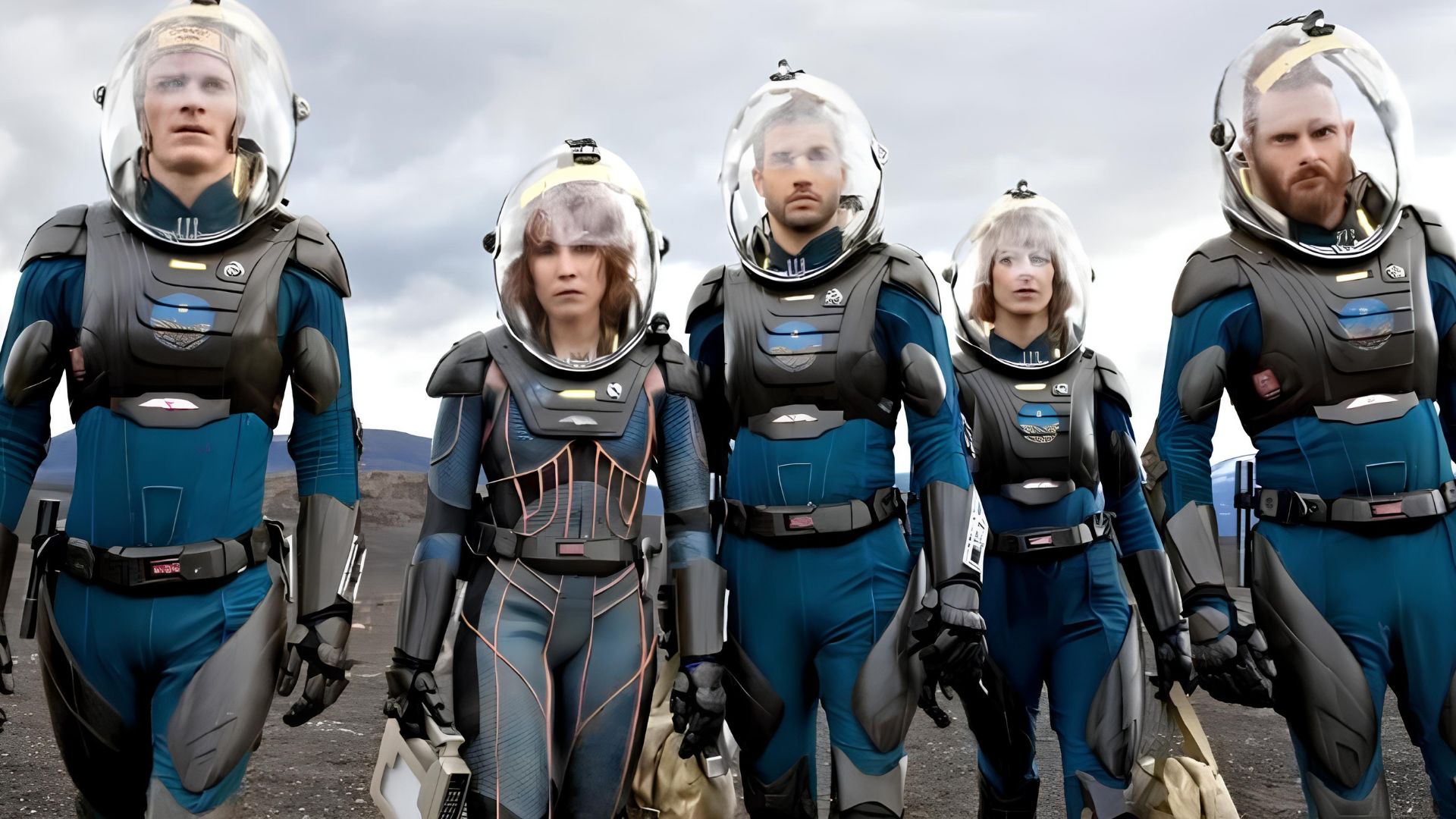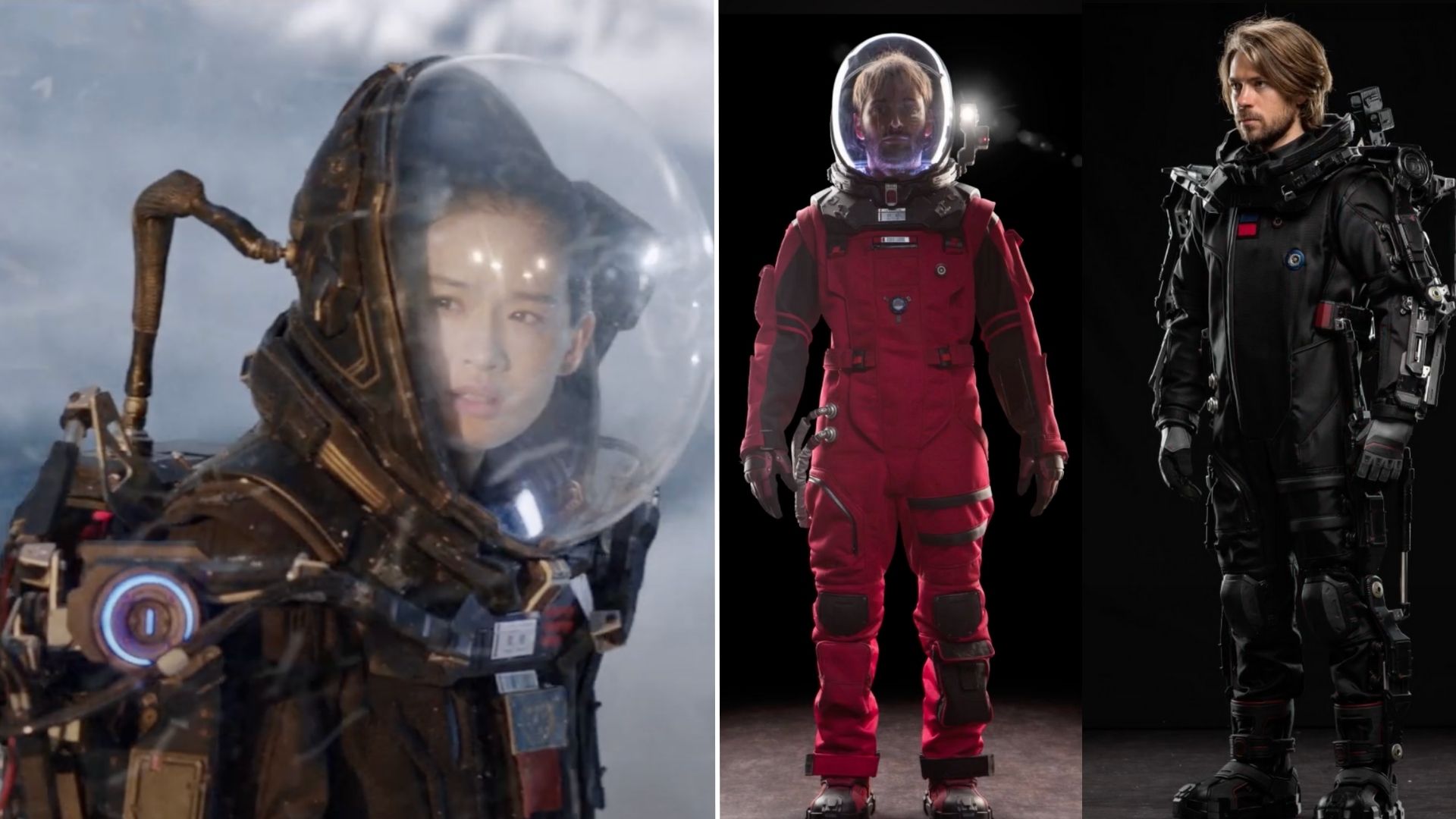We’ve all seen it, the glossy visors, sculpted armor, and sleek silhouettes of sci-fi space suits that look decades ahead of anything NASA’s ever launched. From Prometheus to Sunshine, filmmakers have turned astronaut gear into symbols of progress and imagination. Wearable visions of the future that make exploration look effortless, elegant, and even heroic.
But there’s a fascinating truth hiding beneath the spectacle. While real space suits may not look futuristic, they’re evolving in extraordinary ways. The real advancements aren’t about style, they’re about survival. Today’s engineers are reinventing what astronauts wear from the inside out. Smarter fabrics, adaptive joints, modular life-support systems, and built-in tech that turns these suits into mini spacecraft.
In this list, we’re celebrating seven sci-fi space suits that look straight out of tomorrow, exploring what makes their designs so visionary, and later, we’ll see why real-world suits don’t share the same glossy appeal (yet), even as they quietly outpace fiction in function.
Sunshine – 2007
In Sunshine, the Icarus II crew’s suits are the definition of “futuristic realism.” The design blends a traditional EVA shape with eerie gold visors and thick layered shielding to withstand the Sun’s radiation. The gold-plated helmets, inspired by NASA’s anti-radiation visors, are both visually stunning and scientifically sound. Costume designer Sian Jenkins worked with aerospace consultants to ensure the look wasn’t just theatrical.
The Wandering Earth – 2019
Few sci-fi films have treated space suit design with the same obsessive realism as The Wandering Earth, China’s first large-scale sci-fi production. Designed by New Zealand’s Wētā Workshop, the team behind Avatar and Blade Runner 2049, the production built 100s of iterations to make suits tailored to character roles and environments.
Engineers, soldiers, and civilians all wore different variations, complete with modular life-support backpacks, exoskeletal plating, and transparent domed helmets that reveal the actors’ faces while maintaining a sense of airtight realism. Each piece was weathered and color-coded to signal hierarchy and purpose, grounding the film’s grand concept of a migrating Earth into reality.
Prometheus – 2012
Ridley Scott’s Prometheus goes bold with spherical, near-transparent helmet domes and built-in lighting systems that make the crew look like space archaeologists in designer armor. The production used two internal fans in the helmets to keep condensation down and various internal screens inside the helmet shell to display data. The clean lines, hidden seams, and lighting combine to give us one of the more futuristic looks in big sci-fi.
 20th Century Studios. Via The Art of Costume
20th Century Studios. Via The Art of Costume
Lost in Space Netflix – 2018–2021
 YT/Adam Savage
YT/Adam Savage
Netflix’s Lost in Space reboot took the “sci-fi explorer suit” aesthetic and turned it into something that feels genuinely futuristic. Designed by Legacy Effects (the team behind Iron Man and The Mandalorian), the suit features sculpted armor plating, subtle blue LED illumination, and integrated fiber-optic panels that pulse softly, giving it a breathing, machine-like presence. The articulated joints, magnetic harnesses, and detachable life-support pack make it look like something NASA could unveil in 2040.
Moonraker – 1979
James Bond goes to space! In Moonraker, Roger Moore sports a silver, reflective suit with a Union Jack and a name tag, built by Jacques Fonteray. It’s pure campy sci-fi, but its bold reflectivity, slick surface, and clean color blocking make it feel futuristic in a retro way. It stands out because it doesn’t try to hide. It leans into shine and style.
The Martian – 2015
This suit’s appeal lies in its grounded future design. Costume designer Janty Yates worked with NASA’s archives and museums to build something that feels “one decade ahead.” The suit includes hidden fans (for cooling), internal LED lighting, and a backpack with batteries and cooling systems. It manages to walk the line by being sci-fi enough to feel visionary, but still believable.
2001: A Space Odyssey – 1968
Kubrick’s 2001 suits are the OG of cinematic futuristic style. Despite being made in 1968, their geometry, color blocking, and formal silhouettes still look ahead of their time. The Verge calls them “iconic” and notes how modern designers still reference them. For many sci-fi fans, these suits set the aesthetic baseline.
Where are the “real” futuristic sci-fi space suits
These space suits dazzle with sleek visors, bold lighting, and layered armor because they let us see the future. But in real astronautics, the revolution is happening beneath the surface. While new designs and technologies are being developed for more advanced next-generation space suits, the process is slow due to the high stakes and difficulty of creating a reliable system that meets all life support, mobility, and durability requirements for future missions like lunar exploration. Today’s engineering breakthroughs focus less on visual spectacle and more on invisible performance.
Still, some real suits are beginning to blur the line between function and fiction. Axiom Space’s AxEMU, developed in collaboration with Prada, is one such leap. Meanwhile, SpaceX’s EVA suits for the Polaris program are rewriting expectations for form and function.
Their helmet visors use copper and indium tin oxide coatings for heat and glare control, while a head-up display provides real-time data inside the visor. The suit’s joints and fabrics are reengineered for a balance of flexibility and protection, giving them a sleek, cinematic look, much like newer spacewalk suits like the new bright blue Boeing spacesuit.
These are early signals of what’s to come. The outward look may still be practical, but the technology inside is slowly catching up with science fiction’s imagination. So yes, modern space suits may not yet match the visual drama of Prometheus or Lost in Space. But the seeds of that future are already woven into today’s smart textiles, adaptive materials, and modular engineering. As these internal innovations mature, we may finally get suits that not only work like miracles of engineering, but also look like they were borrowed from the 23rd century.





